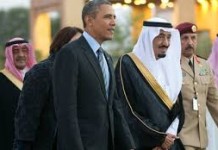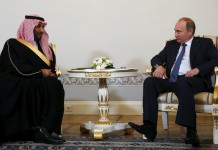Context
 Ethnic and sectarian violence is not new to the port city of Karachi. Over the last week, more than 100 people have been killed in various incidents of indiscriminate firing by unknown assassins, and in pitched gun battles between unidentified rivals. Since the Pakistan Peoples Party (PPP) came to power, these bouts of violence in Karachi recur when the PPP led coalition government, in Islamabad, finds itself in trouble. This article examines the various causes of unrest in Karachi, Pakistan.
Ethnic and sectarian violence is not new to the port city of Karachi. Over the last week, more than 100 people have been killed in various incidents of indiscriminate firing by unknown assassins, and in pitched gun battles between unidentified rivals. Since the Pakistan Peoples Party (PPP) came to power, these bouts of violence in Karachi recur when the PPP led coalition government, in Islamabad, finds itself in trouble. This article examines the various causes of unrest in Karachi, Pakistan.
Analysis
There are several explanations for the killings and chaos in Karachi:
- The Pashtoon dominated Awami National Party (ANP) or ethnic factions with affinity towards it, are involved.
- The Urdu speaking Muttahida Qaumi Movement (MQM) is the cause.
- Foreign enemies of Pakistan are attempting to destabilize the commercial centre of Pakistan by insinuating ethnic and sectarian carnage.
- To shift the focus from its poor record of governance, PPP often uses the Sindh nationalist sentiments against MQM and other parties.
- Al Qaeda linked extremists want to accelerate chaos in Karachi and all through Pakistan.
- The gangs linked to the underworld (Lyari Gang) and mafia are causing this disorder.
- In the past, Pakistan’s Intelligence agencies have also been on the receiving end of the blame.
Political Implications
Without clear identification of the causes of unrest in Karachi, the remedies are short lived. ANP and MQM are the two most anti-extremist parties, however, due to their deep ethnic orientations, they have had strong enmity for each other. This leads to an unending process of accusations that MQM and ANP hurl at each other for causing violence in Karachi.
One prominent member of PPP who has since been reprimanded by the party leadership, and ANP party, have demanded to hand over the city of 18 million people to Pakistan Army to control the situation. However the party that recently requested the generals to take over the helms of the government and the anticipated revolution, MQM, is strictly against any such action involving its home turf. Apparently, the message was meant for the feudal from Sindh, Khyber Pakhtunkhwa, Punjab, and Baluchistan.
Due to differences with PPP and ANP, MQM is considering quitting Pakistani coalition government. However, the chances of this occurring are minimal at this point. Judging from past behavior, MQM will only switch sides as the chances of the PPP government collapsing becomes a real possibility.
If the MQM quits government, the PPP-led coalition, would lose majority (without 25 members of MQM) in Pakistan National Assembly. In the 342-member National Assembly of Pakistan 171 members are required to attain majority. The PPP without MQM support would find itself four members short of this figure. This would shift the balance in favor of Pakistan Muslim Leaque-N.
Violence as part of Extremist Strategy
Some experts claim that the violence in Karachi is directly linked to Taliban and Al Qaeda strategy to destabilize Pakistan by creating ethnic tension. MQM party represents the Urdu-speaking community, whose ancestors migrated from India to Pakistan at the time of partition, in 1947. On the other hand, ANP is a Pashtoon nationalist party and heads the government in KP, the province most adversely affected by terrorism and Taliban insurgency.
Some independent sources and observers are of the view that Pakistani Taliban (TTP), in association with Lashkar-e-Jhangvi, are responsible for triggering violence. One of their reasons is to pitch their staunch opponents against one another. NATO pressure in Afghanistan, drone attacks in FATA, plus Pakistan’s military operations, have caused Karachi to become one of the primary retreating sanctuaries for various forms of extremists. The extremists also want to control Karachi, so as to disrupt NATO supplies, majority of which originate from the two ports of the city.
Conclusion
There appears to be two principal and parallel strings of causes for violence and instability in Karachi:
- One of these is linked to the party politics and its connection to the underworld. This pattern results in incidences such as the one that occurred in Shershah Kabari Bazaar, with the death of 12 innocent people and numerous other targeted killings.
- The other thread is associated with the extremists and could also have foreign origins. The events tied to this pattern are illustrated by the attack on Abdullah Shah Ghazi Shrine on October 8, which left about 8 people dead. The assassination of religious leaders and scholars, Deobandi and Barelvi tussles, including the Sunni-Shia violence, are associated with this stream.
There could be a slight overlap between the two strings of causation listed above, but for the most part, they seem to be mutually exclusive. Both streams depend on the ethnic and sectarian divides of Karachi for their benefit.




